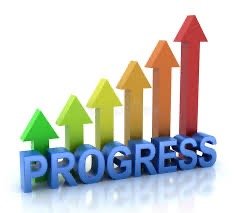A Short Post About Assessment & Progress
When we talk about how students are doing at school, we often do so in terms of progress. ‘Andrea is making good progress’ or ‘James isn’t making as much progress as we’d like him to be making’ are the sorts of statements parents are likely to read in reports or hear in discussion with a teacher. Most parents are satisfied with their child’s learning being summarised in this way. But should they be? Let’s explore this.
What is ‘progress’?
Progress relates to change between one thing and another. Often, it gets equated with ‘coverage’: you’ve completed a topic on ‘atoms on molecules’, so you’ve made progress. However, covering content and learning content are not the same thing. If we think of progress as coverage, we are in the territory of delusion.
To have made progress in a real way, students need to have learned something new, or improved their learning of something. Progress is about changes in learning.
Curriculum and assessment
To understand these changes in learning, teachers, students and parents need information about two things:
Curriculum – what are students supposed to be learning?
Assessment – what evidence is there that this learning has happened?
Really, the purpose of assessment is to find out where students are in the curriculum. This might be in relation to a specific fact or concept, a narrow body of content or a wide body of content. Any positive change indicates progress, of which there are two types: horizontal progress and vertical progress.
Horizontal and vertical progress
To appreciate this, imagine Colin is a student who has just completed the topic you were teaching on atoms and molecules. He scores 65% in the end-of-topic assessment. The class moves on to study a topic on the periodic table. In the end-of-topic assessment on this, Colin again scores 65%. Has he made progress?
The answer is both ‘yes’ and ‘no’. Thought about in terms of learning something new, yes, Colin has made progress. The end-of-topic assessments evidence this. This is horizontal progress:
However, thought about in terms of improving his learning of atoms and molecules, we cannot say Colin has made progress. There is no evidence of vertical progress. We would have to have used multiple assessments covering similar content to be able to make a judgement about that:
In most schools, teachers are good at assessing horizontal progress. However, they are less good at assessing vertical progress. Often, this is a result of time pressures and the need to ‘get through’ the content of a course. However, if we step back and think about this objectively, we really do need to make time for vertical assessment to take place as well.
Similarly, many students and parents aren’t as interested in vertical progress as they should be. So long as performance in an assessment is ‘good enough’, hitting a particular threshold, they are satisfied. A student asking ‘Did I pass?’ is an example of this. In their mind, this short-term achievement is all that matters. Except, of course, it isn’t, because unless their score was 100%, there is a teaching–learning gap that needs to be addressed. Their mindset needs to shift from ‘I’ve done well enough’ to ‘I need to get even better’.
Remedial work
Returning to Colin, for his learning of atoms and molecules to improve, there would need to be remedial work following the end-of-topic assessment. He would need to analyse his performance in this assessment and identify what he didn’t know. Then he would have to do something about this, through additional study and practice. More than likely, he will need the support of his teacher for at least some of this. There will be some aspects that will need to be retaught.
A lack of a focus on remedial work and follow-up vertical assessment is where many schools are going wrong today. Students sit an end-of-topic assessment and that’s it. Forever. They are never assessed on this specific content again. It’s little wonder then that learning gaps don’t close.
Taken from The Teaching Delusion 2: Teaching Strikes Back by Bruce Robertson, published by John Catt Educational. Available at:




